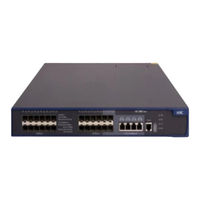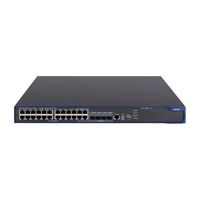User Manuals: H3C S5600-50C 48-port Ethernet Switch
Manuals and User Guides for H3C S5600-50C 48-port Ethernet Switch. We have 3 H3C S5600-50C 48-port Ethernet Switch manuals available for free PDF download: Operation Manual, Installation Manual
H3C S5600-50C Operation Manual (1218 pages)
Table of Contents
-
-
-
-
What Is CLI17
-
-
-
-
-
Introduction42
-
-
-
Introduction55
-
-
-
Introduction68
-
Introduction72
-
-
-
Introduction79
-
-
-
-
Port-Based VLAN100
-
VLAN Interface100
-
-
-
-
-
-
-
-
-
Overview169
-
-
-
-
Introduction186
-
-
-
-
-
-
-
Overview229
-
-
-
-
Enabling MSTP275
-
-
Enabling MSTP280
-
-
Introduction286
-
-
-
-
-
IP Route302
-
Routing Table302
-
-
-
-
RIP Overview311
-
-
-
OSPF Overview322
-
-
-
-
-
BGP Overview351
-
BGP Message Type352
-
Mp-Bgp363
-
-
-
Importing Routes366
-
-
-
-
Introduction401
-
-
Advertisement
H3C S5600-50C Operation Manual (1278 pages)
Table of Contents
-
-
-
Login11
-
Manual List14
-
-
-
-
Vlan Interface111
-
Port-Based Vlan112
-
Vlan Overview108
-
-
-
-
-
-
-
-
-
-
-
-
-
Dldp Status229
-
Dldp Timers230
-
-
Auto Detect249
-
Mstp258
-
-
Stp Overview260
-
Mstp Overview270
-
Enabling Mstp293
-
-
Multicast323
-
Ip Route325
-
Default Route332
-
Basic Concepts336
-
Rip Overview336
-
Ospf Overview349
-
-
Ospf Features361
-
-
-
-
Bgp Overview385
-
Bgp Message Type386
-
Importing Routes404
-
-
-
Advertisement
Advertisement


